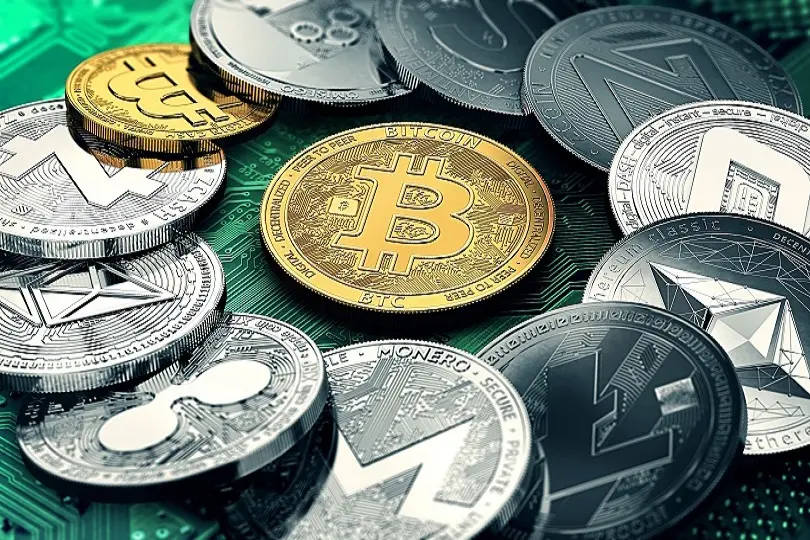Riding on the initial spring breeze? The "bankruptcy target" has risen by over 100% at its peak
Author: Sharon, Joyce
Table of Contents:
- FTT's monthly increase reaches 169.6% due to FTX restart news
- Celsius bankruptcy progress update, CEL monthly increase exceeds 90%
- SEC urges judgment process, LUNA monthly increase exceeds 50%
- VGX price slightly rises due to Voyager's settlement with regulators
- Related tokens to "bankrupt subjects" OX monthly increase exceeds 70%
In this round of cryptocurrency rally, "bankrupt subjects" are also showing signs of recovery, with related tokens such as FTT, CEL, and LUNA experiencing 24-hour increases of 83.86%, 4.5%, and 13.7% respectively; over a 30-day period, FTT, CEL, LUNA, and VGX have increased by 169.6%, 92.1%, 56.6%, and 24.4% respectively.
FTT's monthly increase reaches 169.6% due to FTX restart news
On November 9, Gary Gensler, chairman of the U.S. Securities and Exchange Commission (SEC), stated that if Tom Farley, CEO of Block.one's crypto trading platform Bullish, or anyone else wants to restart FTX, "I would say to act within the law." If the new leadership operates with a clear understanding of the law, a restart of FTX is possible.
Subsequently, the FTX token FTT surged to $2.36 before retreating, with a 24-hour increase of 83.86% and a staggering 30-day increase of 169.6%. As of the time of writing, FTT is priced at $2.82.
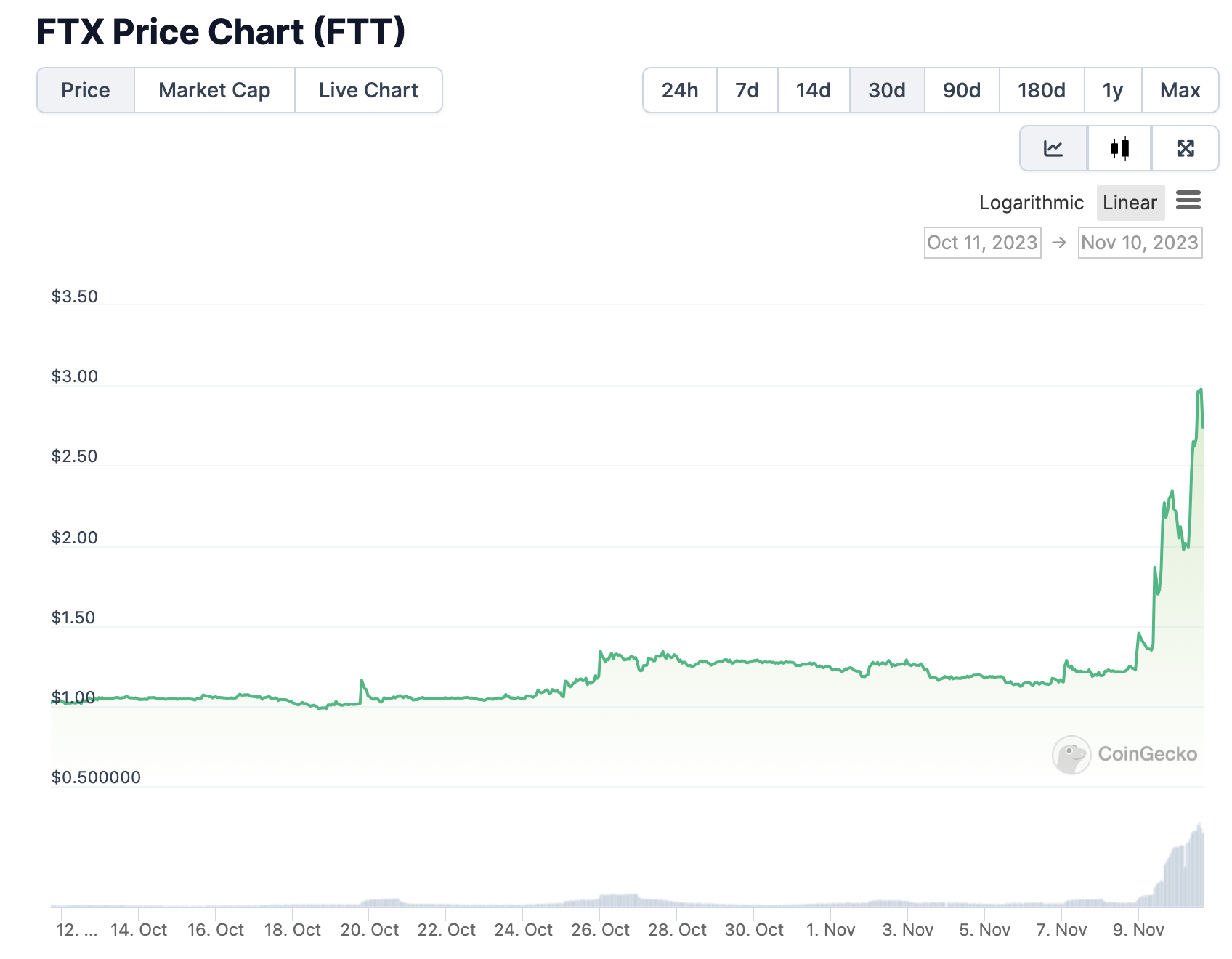
It is noteworthy that FTT has seen multiple upward trends over the past year. On December 9, 2022, CNBC crypto commentator Ran Neuner proposed restarting FTX and reissuing new FTT on his social platform. SBF responded that this would be a productive avenue for exploration by all parties. He hoped the existing team would do so. This post subsequently triggered an increase of over 20% in FTT.
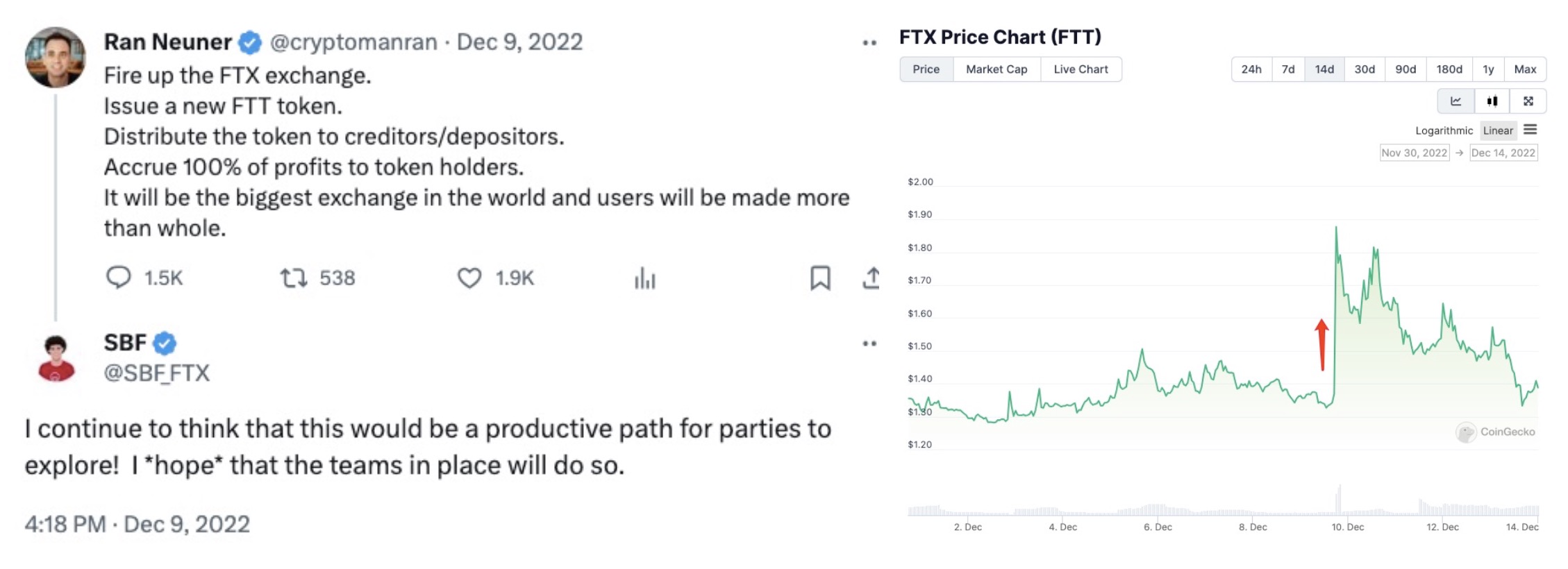
In April 2023, during a court hearing for the FTX bankruptcy case, it was stated that FTX was considering reopening its trading platform at some point in the future. Following this news, FTT briefly broke through $2.7, with a 24-hour increase of 97.5%.
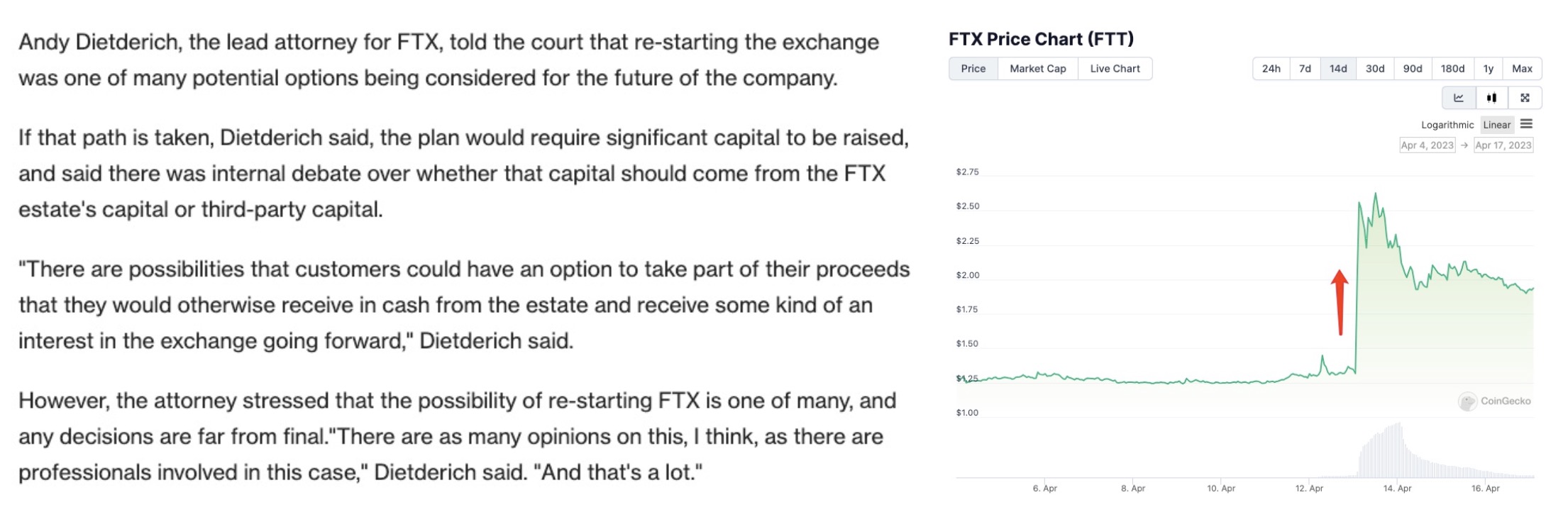
On June 25, Coingape reported on a list of entities interested in the FTX 2.0 restart published by FTX's consulting firm Alvarez & Marsal; on the 28th, FTX CEO John J. Ray III stated that "we have begun soliciting interested parties to restart the FTX.com trading platform." By June 29, FTT had a 24-hour increase of 16.79%; on June 30, FTT briefly touched $2.5, with a 24-hour increase of 38.35%.
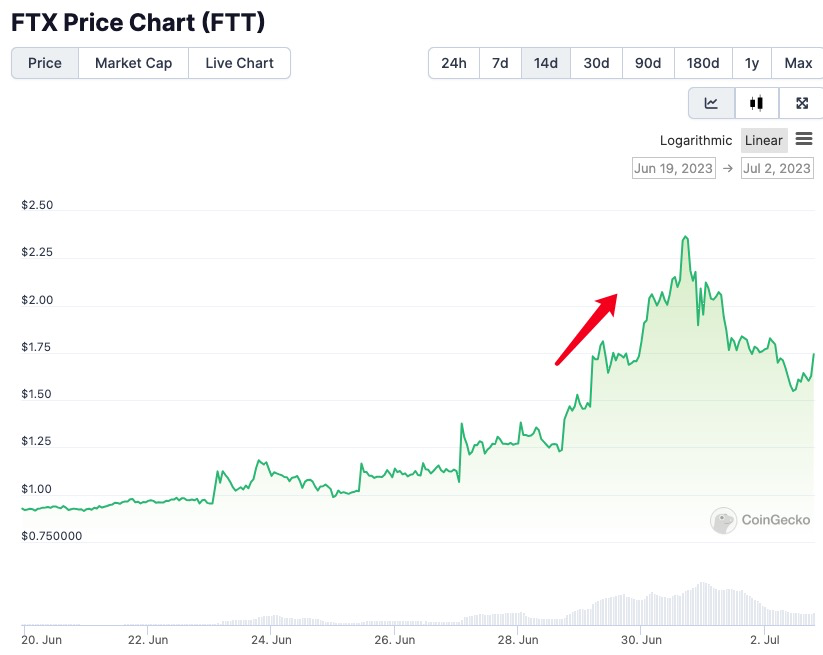
On August 1, the FTX 2.0 Coalition officially stated that FTX had submitted a reorganization plan, with key information including that all non-customer claims (such as those from the IRS) would be subordinate, FTT claims would amount to zero, and offshore exchanges would restart to fill customer gaps. Subsequently, FTT briefly surged over 10%.
On October 25, FTT saw a brief increase of 23.8%, following confirmation from SBF's lawyer that SBF would testify in court on October 26.
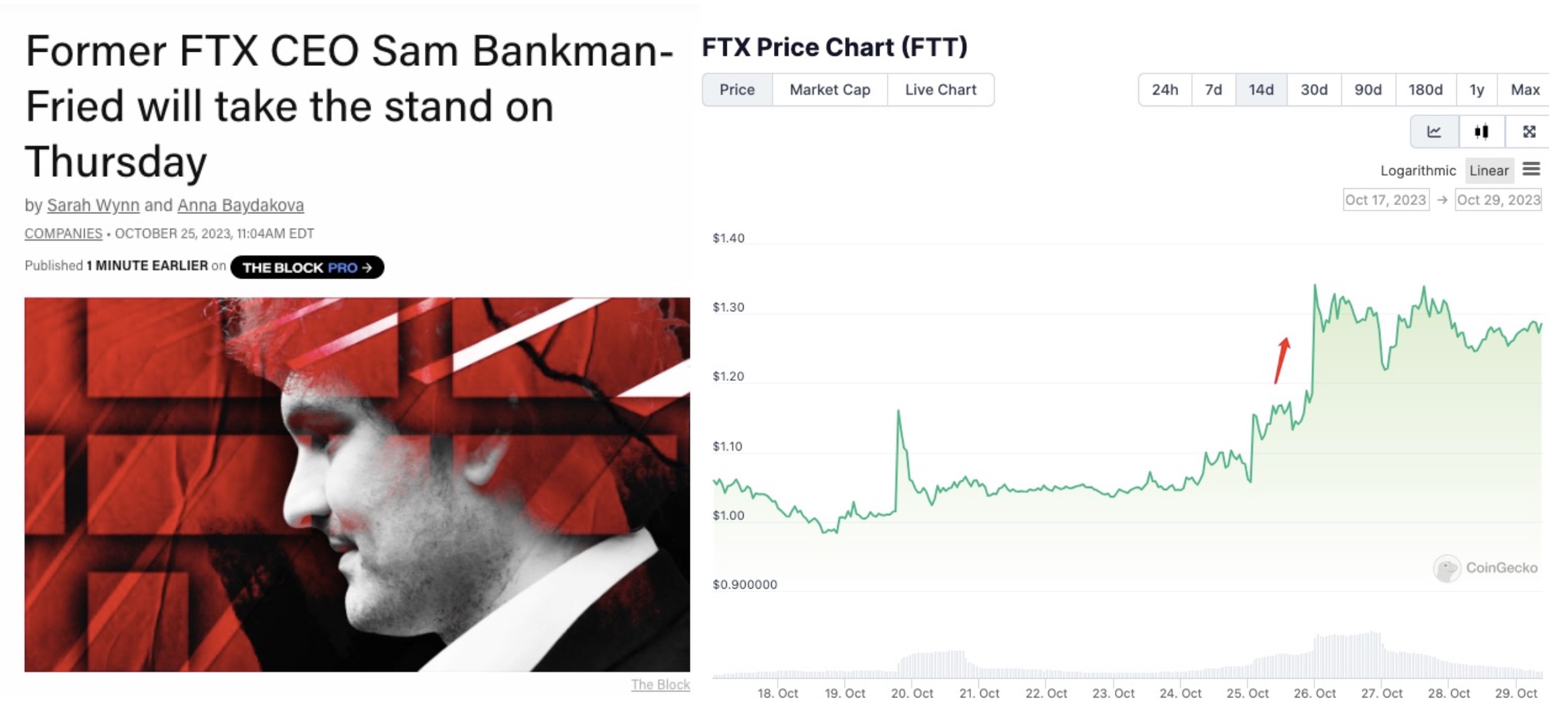
In the past week, FTT has increased by over 135.4%. Many investors hope to catch the next rise of FTT, with community investor @BoringBack pointing out that based on the previously successful creditor claim plan reached by the FTX debtor team and UCC, AHC, the reorganization plan is likely to achieve a settlement and will not be later than the end of December for the formal version of the FTX reorganization plan to be released.
Celsius bankruptcy progress update, CEL monthly increase exceeds 90%
Once one of the world's largest crypto lending platforms, Celsius announced bankruptcy in 2022. However, today, after the U.S. bankruptcy court announced approval of Celsius's plan to transform into a creditor-owned Bitcoin mining company, even without SEC approval, its token CEL surged, with a 24-hour increase of 4.5% and a monthly increase of 92.1%.
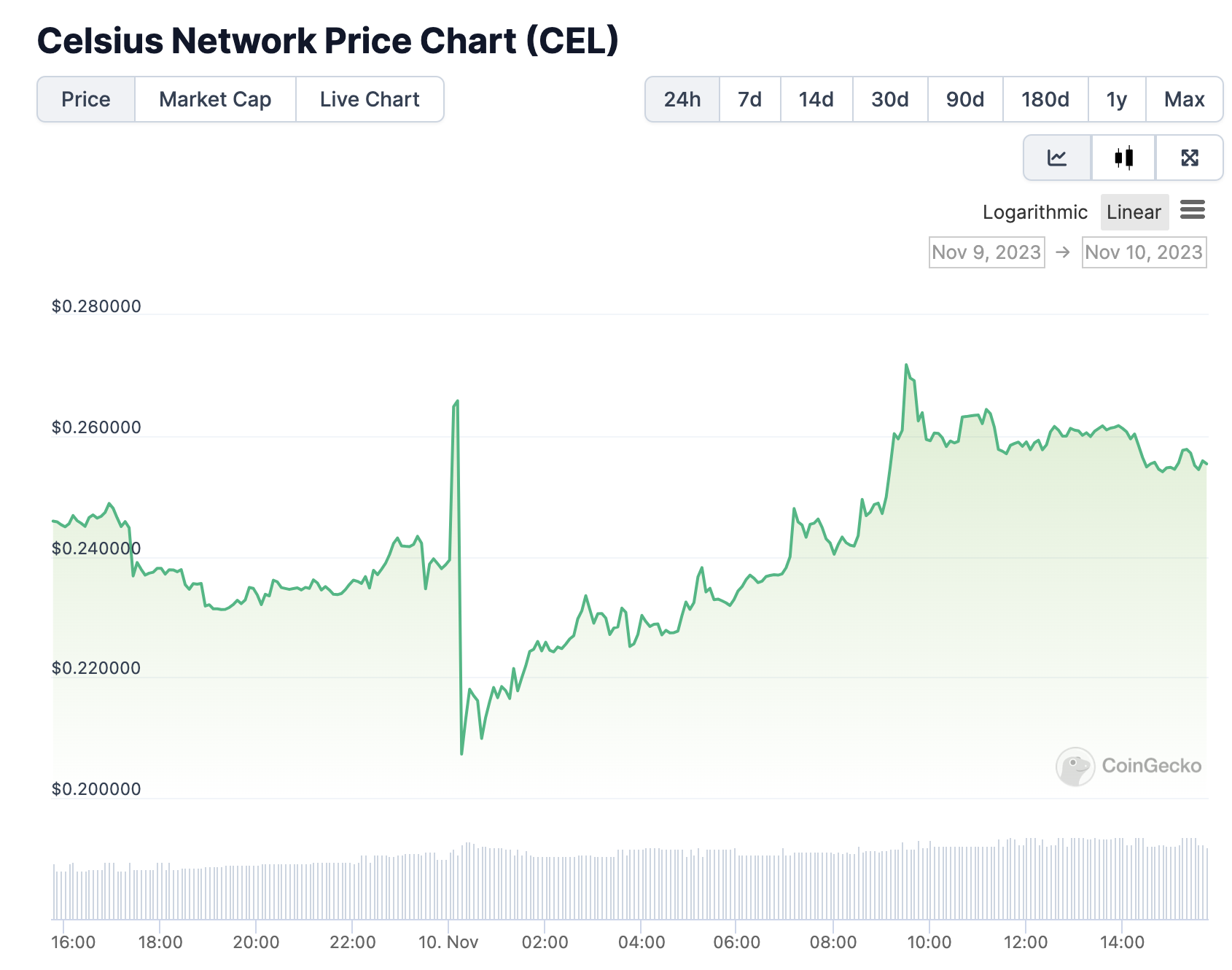
Looking at CEL's price over the past six months, it reached a peak on October 28. At that time, SBF mentioned during his testimony that Celsius had hoped SBF would provide emergency funding, but SBF rejected the request.
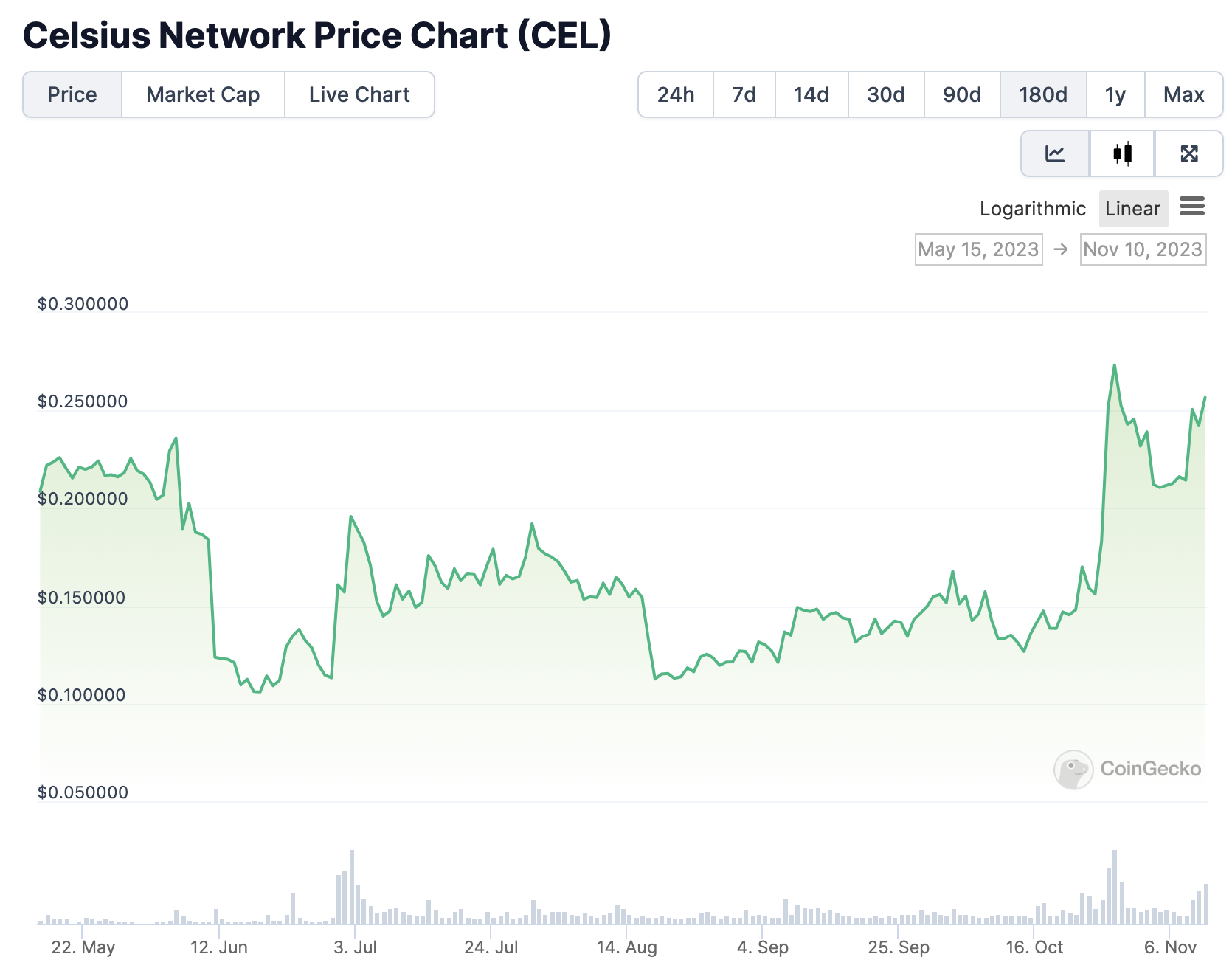
Regarding Celsius itself and its token CEL, community member Stephen analyzed that Celsius, with 1.7 million users, "will be favored by capital" in the WEB3 space: "A market downturn may lead to a 10-20% drop, but once there is a phenomenal positive news (such as a reassuring acquisition reorganization and a strong team coming in), there could be a significant increase."
As of July 2022, Celsius had 1.7 million registered users and 300,000 active users with balances over $100, paying about 5% in financial rewards. Celsius had 23,000 retail borrowers with $411 million in outstanding loans and $765 million in collateral; the company had 47 institutional borrowers with $93 million in outstanding loans and $98.5 million in collateral.
SEC urges judgment process, LUNA monthly increase exceeds 50%
Like CEL, LUNA, which once gained immense popularity in South Korea and even globally, has also seen significant increases recently. According to CoinGecko data, LUNA's 24-hour increase reached 13.7%, with a 30-day increase of 56.6%. As of the time of writing, LUNA is priced at $0.594, the highest in nearly three months. On November 3, the SEC requested the court for a summary judgment against Do Kwon (founder of LUNA issuer Terra) and Terraform.
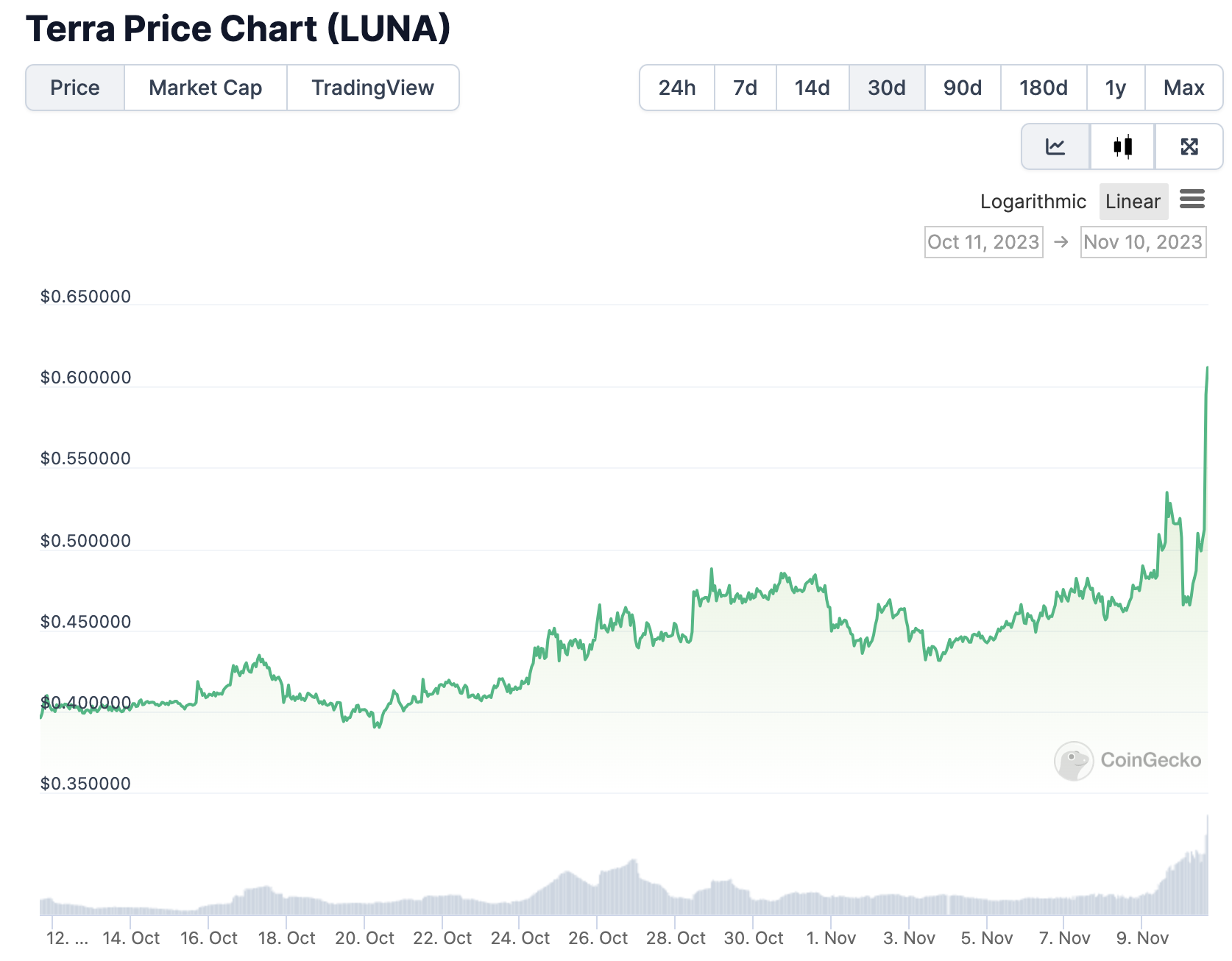
According to BlockBeats observations, on September 28 of this year, LUNA's price also saw a significant increase, peaking at $0.572. At that time, the issuer of LUNA, the Terra Classic (LUNC) community voted to decide to stop all minting of Terra Classic USD (formerly known as UST), and the proposal was passed with 59% support, aimed at protecting the community and external investors who are "destroying USTC to help restore the peg."
"Legal experts say that if Kwon is extradited, he could file legal claims against Serbia, which might allow him to avoid returning home for years. At least two employees of Terraform Labs reside in Serbia. They have not responded to DL News's request for comments. This may give Kwon enough time to participate in the next bull market and provide another opportunity to attract novice investors who are unaware of the previous failures in the industry."
VGX price slightly rises due to Voyager's settlement with regulators
Compared to the previous "bankrupt subjects," VGX, which has had a similar experience, has not performed as well. Although its price decreased by 2.8% in 24 hours, its monthly increase reached 24.4%. The latest update from Voyager Digital, the issuer behind VGX, was on October 13. At that time, the Federal Trade Commission (FTC) announced that it had reached a settlement with Voyager Digital, permanently prohibiting it from handling consumer assets and suing its former CEO Stephen Ehrlich for falsely claiming that customer accounts were insured by the federal government.
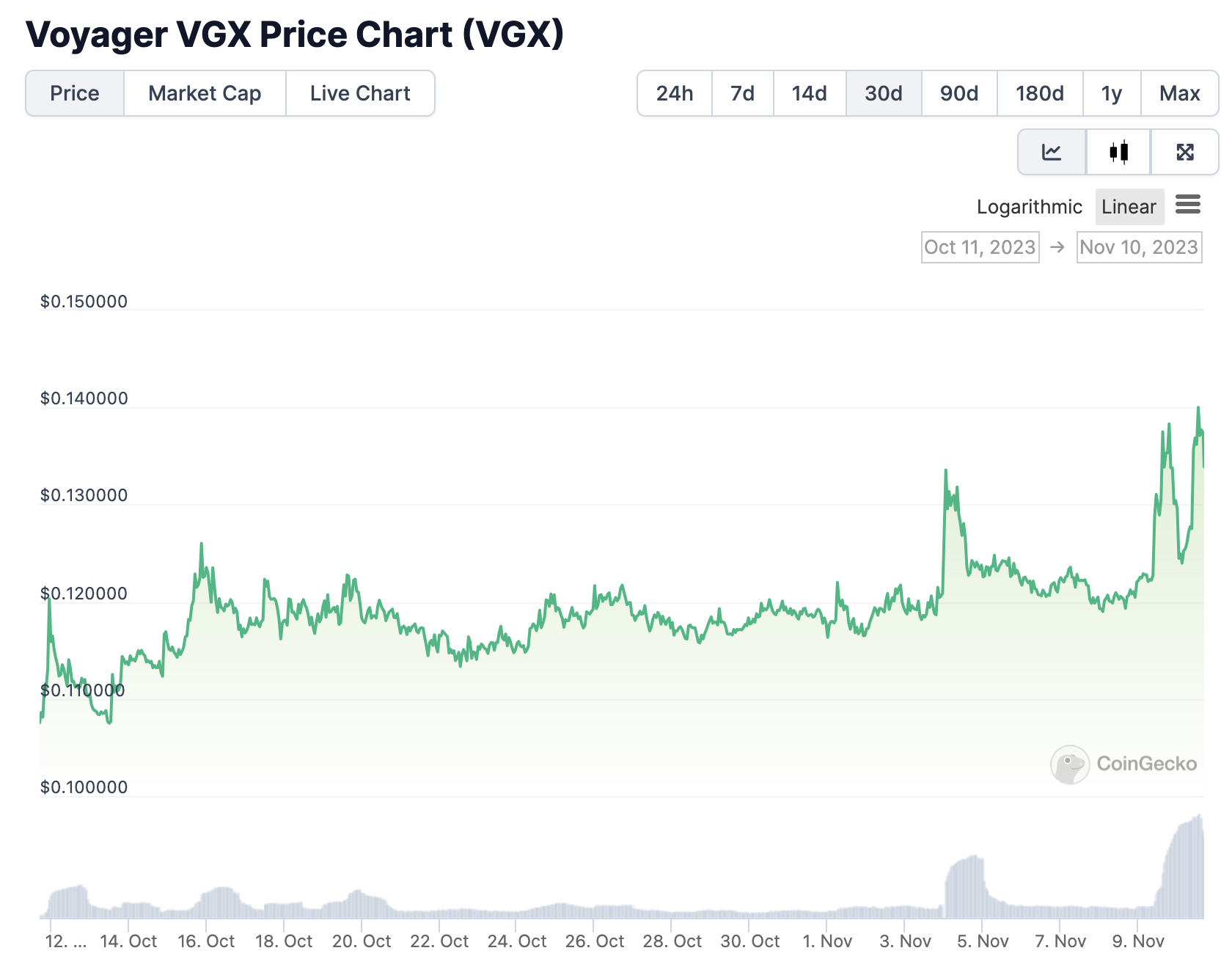
According to BlockBeats observations, in the past six months, VGX had risen to a peak price of $0.192 when Voyager reopened withdrawals, providing customers with a month of withdrawal services. After June 23, over $229 million had flowed out from the Voyager platform within a month. By August, Voyager had also transferred 1,500 ETH and 25 trillion SHIB to Coinbase.
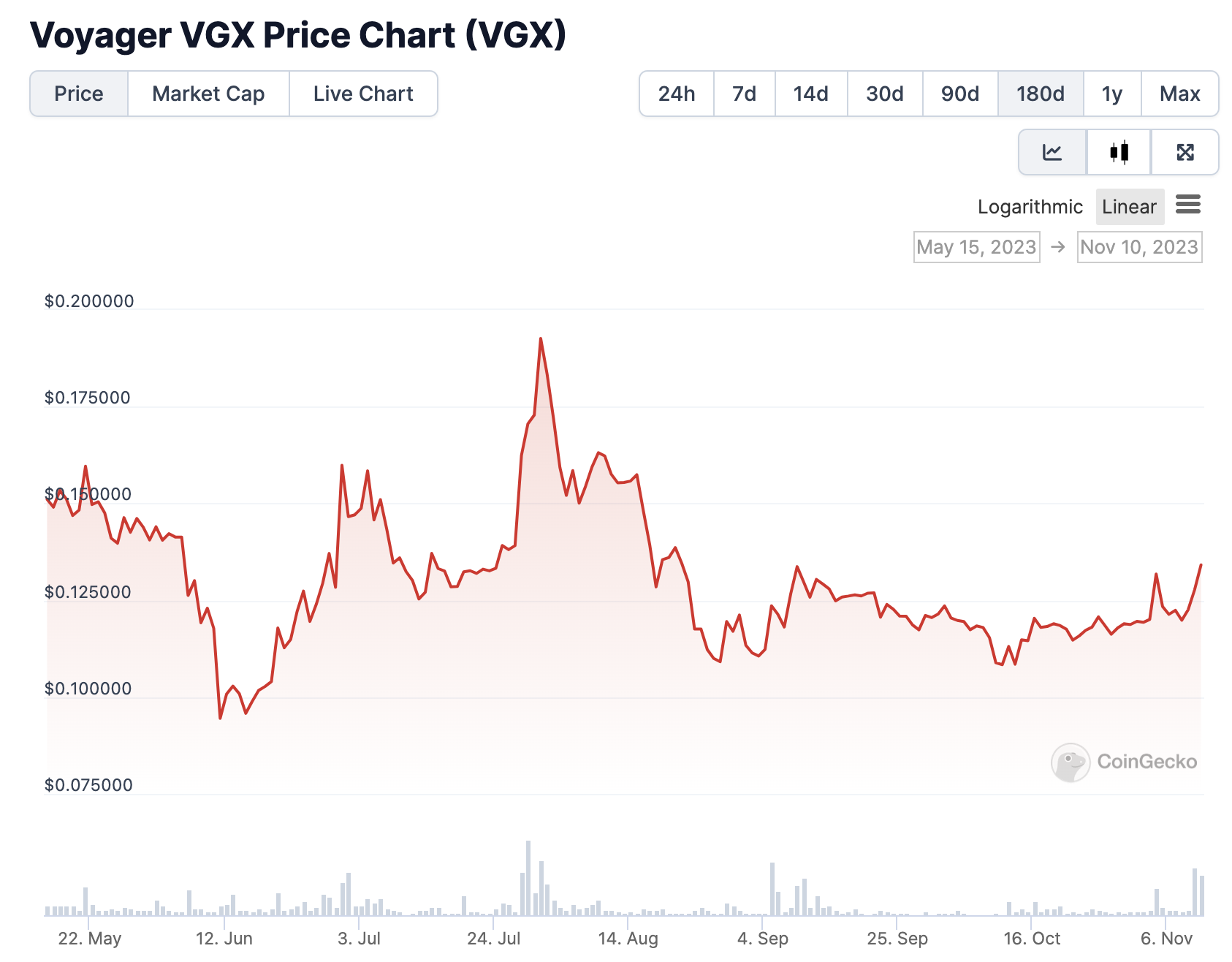
Related tokens to "bankrupt subjects" OX monthly increase exceeds 70%
In addition to projects that have gone bankrupt, the market is also paying attention to other related tokens. The now-defunct Three Arrows Capital had its founder Zhu Su as the founder of OPNX, "the first trading platform for claims."
Since August, the price of OX on the OPNX platform has been declining, but it has seen significant increases in the past month, with a 7-day increase of 40.6% and a nearly 1-month increase of 77.8%.
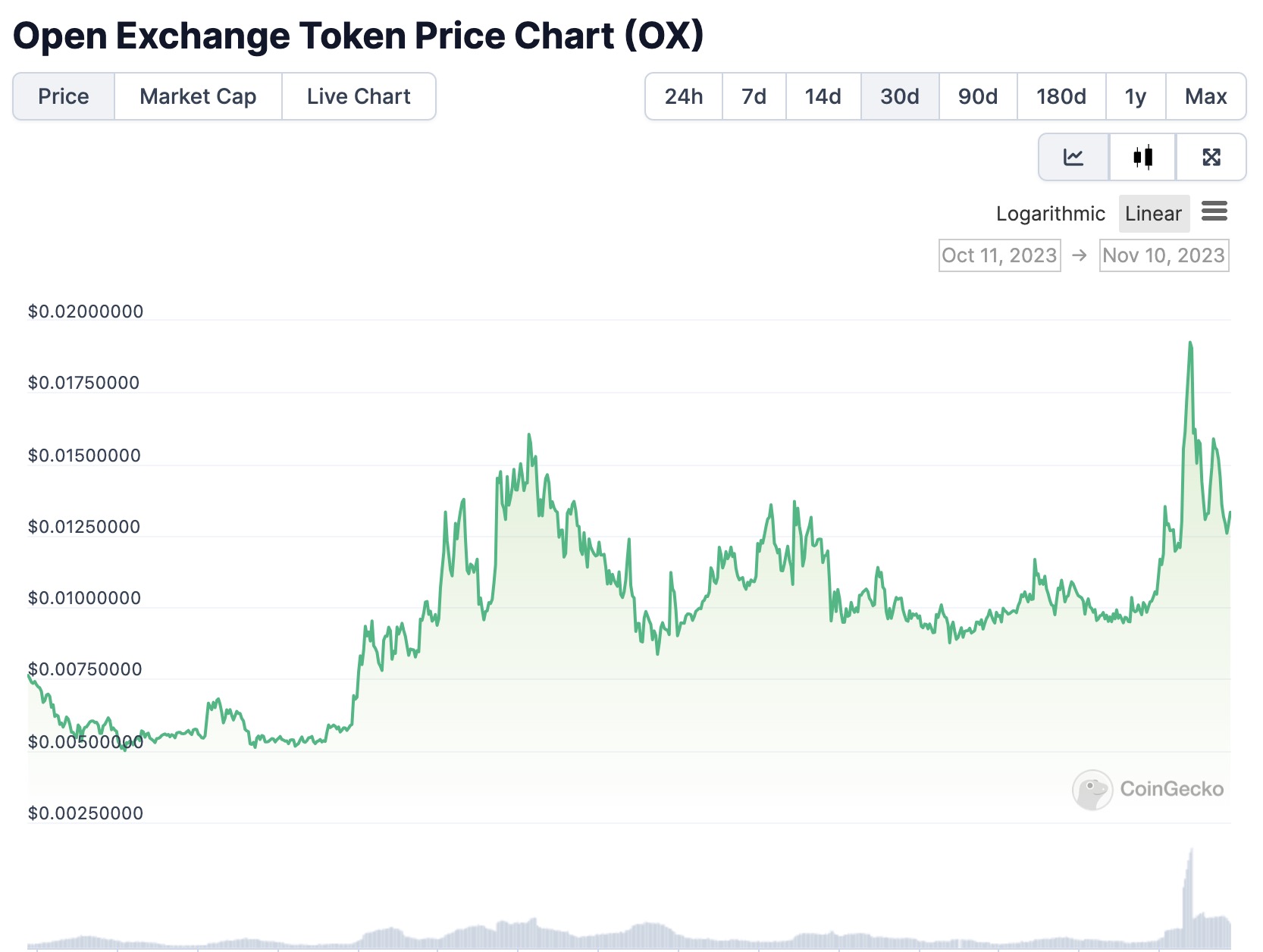
"Since the launch of the OPNX platform, its trading volume has attracted user attention. According to FLEX Statistics data, since June 23, the 24-hour trading volume on the OPNX platform has exceeded $50 million, peaking at $57 million, with the current 24-hour trading volume at $47.72 million."
Conclusion
The blogger @BoringBack, who focuses on "bankrupt coins," has stated that the prices of "bankrupt coins" often surge due to specific event news. The concept of "bankrupt coins" is closely related to project restructuring, making it seem strongly correlated with news events, appearing to offer clear returns; however, at the same time, the processes involved in restructuring are complex and cumbersome, and sudden news can lead to significant volatility, thus posing high risks.







